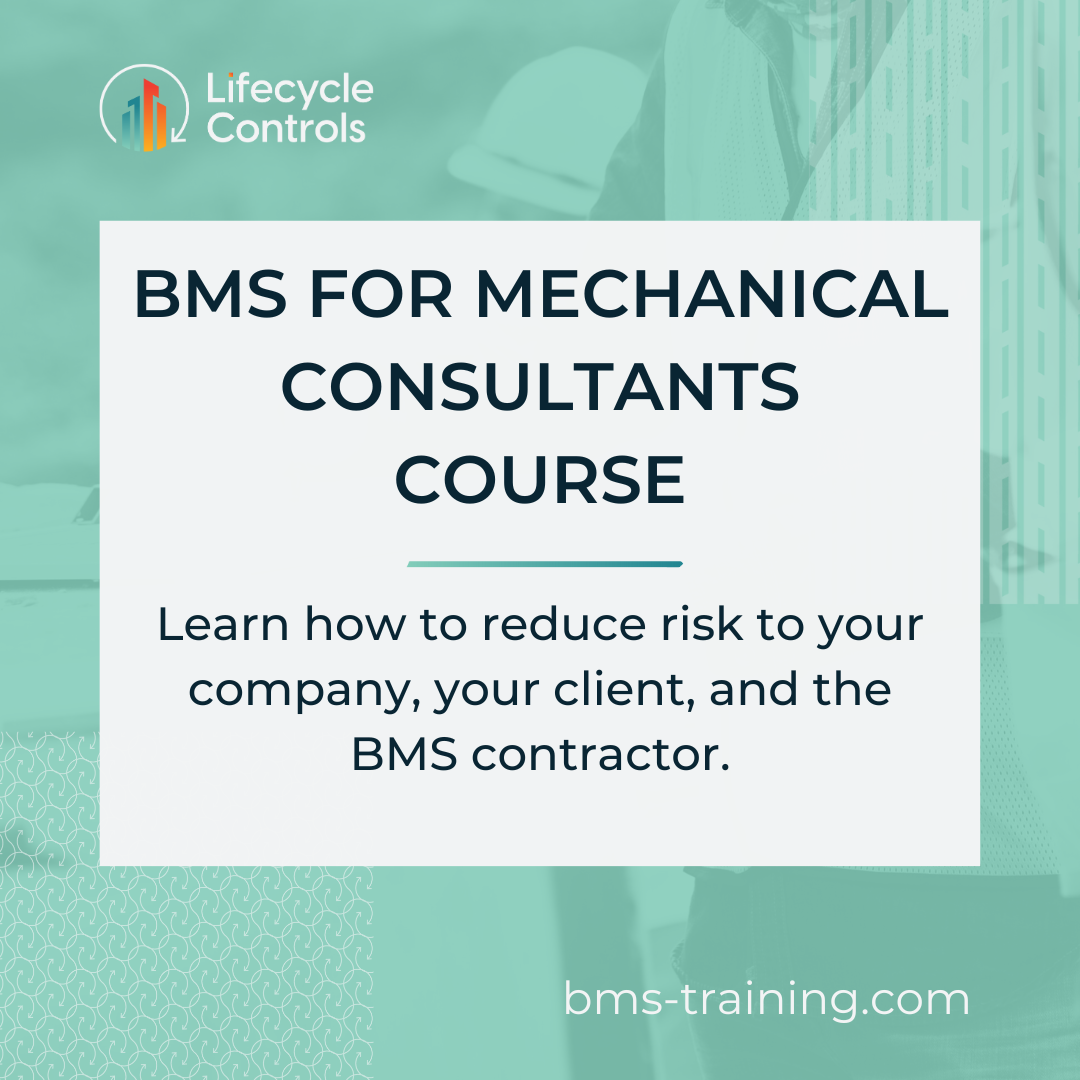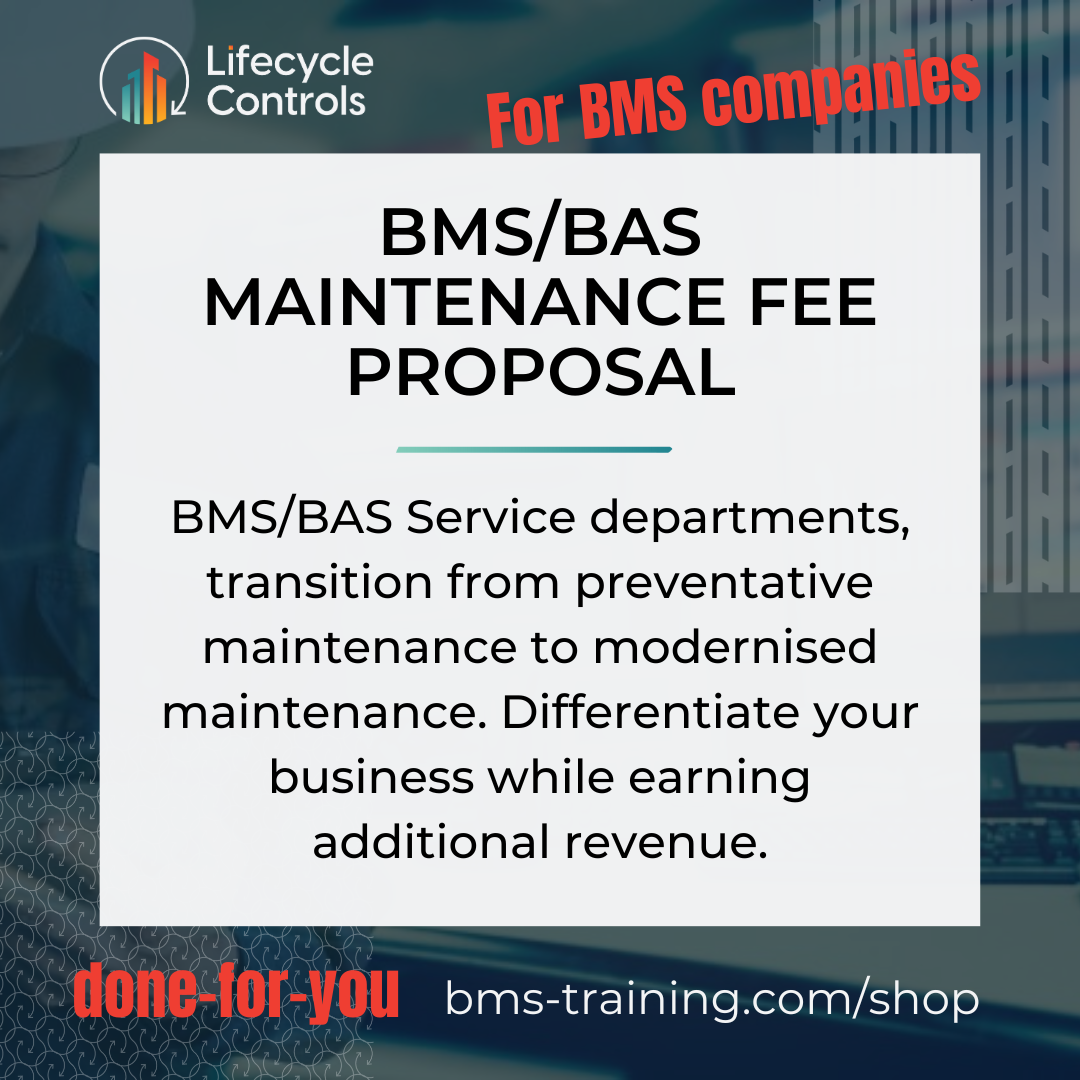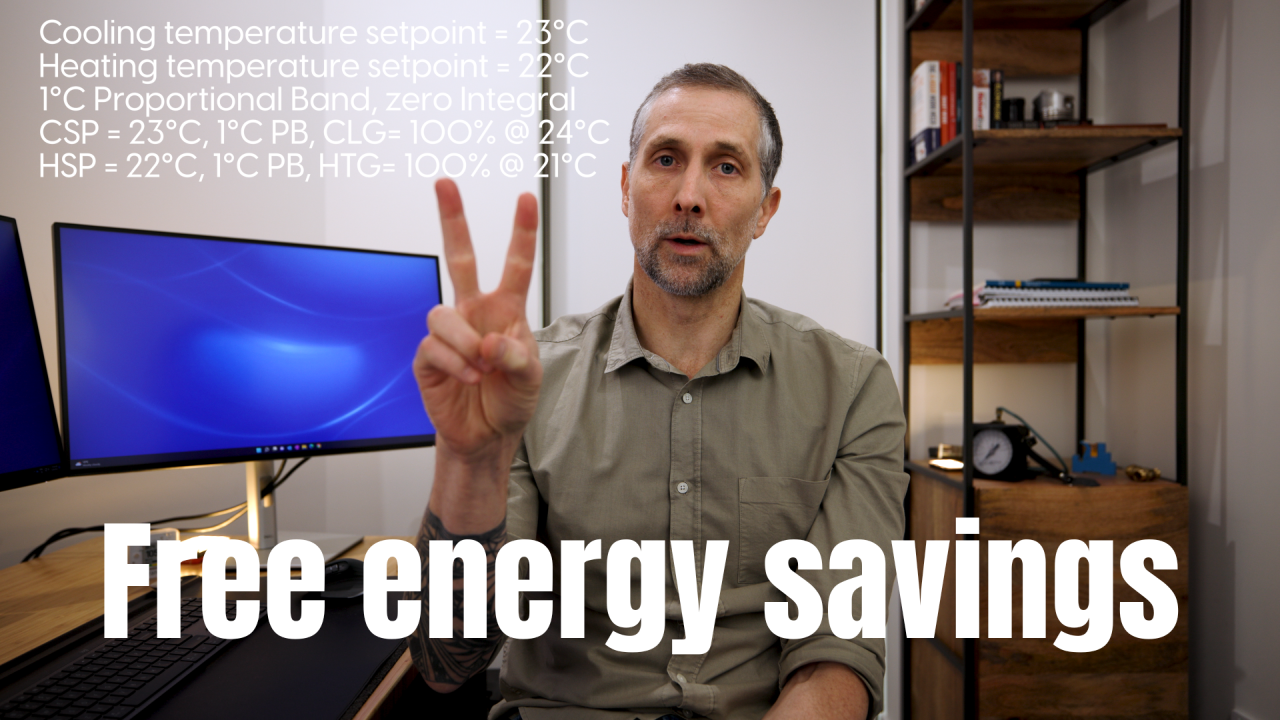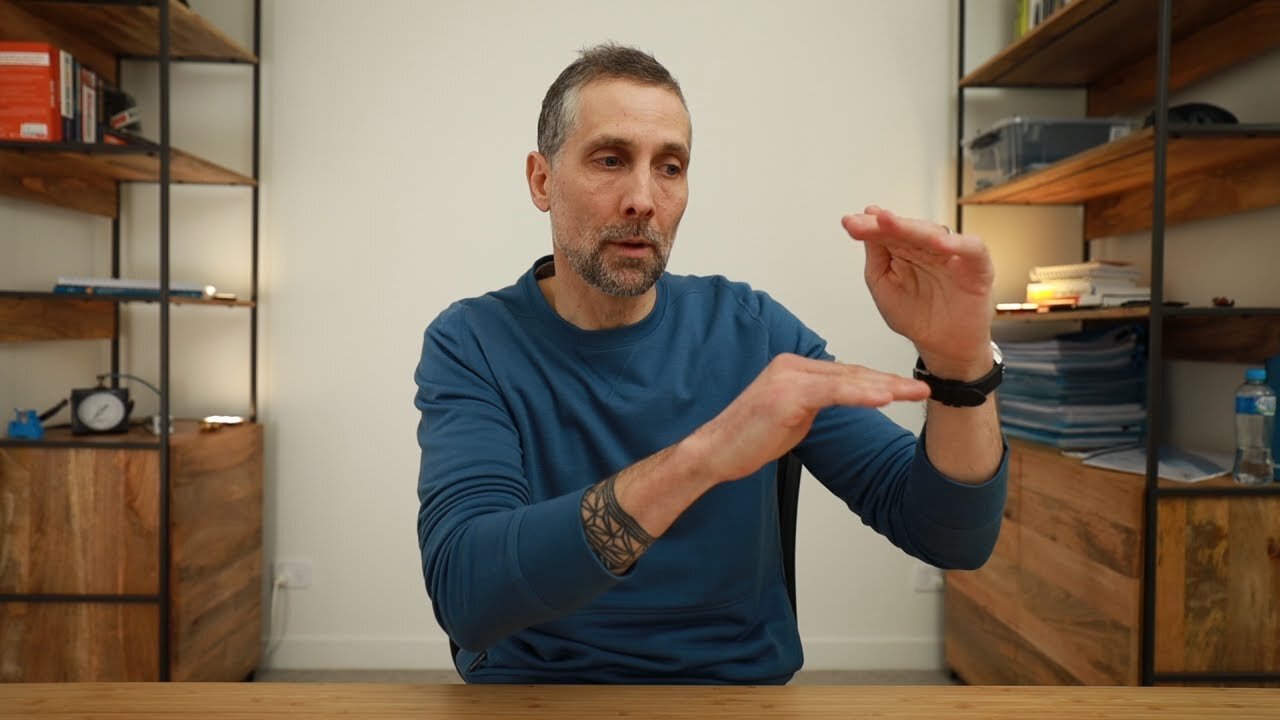BMS Net Zero - Where to Start
Part 2 - Where to Start
Which systems to optimise first, and why.
Introduces the concept of what actually saves the energy, the controller software code, or your attitude, your professionalism, your brain?
Free access to the Learning Management System.
Your Call to Action
What you need to do over the next few weeks:
Share the part 1 introduction video, if you don’t then we are wasting our time. You have the ability to save energy in your buildings, and you have the ability to save energy in other buildings by getting more people on board.
Watch this part 2, where to start video again (I know you just watched it, watch it again, this is important).
Start getting ready, but do not change anything on site until you have watched the part 3 video (published next week), otherwise you will need to go back and do it again.
Get a copy of the Functional Description / Control Sequences / Description of Operation for the buildings that you plan to optimise.
Study your existing optimal start, VAV and FCU control strategy.
If your control strategy design document is not detailed or does not exist, then take the time to properly reverse engineer the software code into a comprehensive design document (control strategy). Do not reverse engineer the entire buildings control system, that will take too long, just the optimal start and the VAV’s and FCU’s.
Access the free online courses on our Learning Management System.
Advanced Optimal Start Control Strategy
Optimised Control Strategies - VAV’s and FCU’s
Download the Word document templates of the control strategies.
Work through the free lessons.
Start copy/pasting the provided control strategies from the course into your control strategy design document.
Do not start making software changes yet, just start getting your head around the new concepts. Talk to your colleagues, talk to your manager, talk to your customer (the building owner). Start thinking.
In one week I will publish the Net Zero part 3 video, keep an eye out for it.
Featured - Latest published online course

BMS for mechanical consultants course
This course was developed by a BMS consultant for mechanical consultants involved in Building Management System projects. Learn how to reduce risk to your company, your client, and the BMS contractor.
Self-paced online course.
12 hours of video lessons.
Training manual (+90 pages).
BMS design examples.
A sample of Lifecycle Controls BMS specification clauses are provided to assist with learning. You can use these in your own specification.
Online shop

Free control strategy mini courses
Create a free account in our Learning Management System and complete the free chilled water control system mini-course. A certificate is provided at the end of the course. A copy of the control strategy is provided as a Microsoft Word document for you to modify in your own BMS designs.

Please join our newsletter
To be notified when new courses, design templates, and digital products are published.
For updates to coaching availability.
For updates to business-to-business consulting services.
New Youtube video releases and occasional updates on what I am up to.
I will not fill up your inbox with crap.

Bryce Anderson
I am an independent Building Management System consultant based in Australia. I started in the BMS industry in 1998 and initially worked for BMS companies for the first 15 years of my career (2 years in South Africa, 9 years in London, and 4 years in Melbourne). In 2014 I transitioned into BMS consulting, saw a massive gap in the lack of specialist BMS consulting, and started Lifecycle Controls in 2017.
My focus is currently on BMS technical training, coaching, and B2B consulting for BMS companies and mechanical consultancies. Because, fixing one project at a time was making no difference. Training thousands of engineers will :-)
Understand why your customers do not approve important fee proposals and build a pipeline of service project work.
Where does the BMS/BAS fit in a world of technology? Where will the BMS/BAS be in 10 years?
We are building buildings faster than ever before, but we haven’t changed how we design and install the BMS/BAS. To keep up we need to completely change how we design and install BMS/BAS systems.
Some technology companies will market their product as opening up the lock-in from the BMS and the BMS contractor. That may not be quite right.
People don’t want to work like they have been for the past 100 years. People want more than just work-life balance. They want the flexibility to work where they want and when they want.
Who is responsible for your continuous professional development? Your employer? You? Watch this video to find out.
The Chiller Management System (CMS) visualisation and analysis manual provides a resource for engineers that want to provide best-in-class chiller management system visualisation and analysis.
Outside air volume measurement helps, but it does not solve all our control issues.
There are millions of buildings around the world that have the incorrect outside air being drawn in from the AHUs.
If you don’t have these graphics, then you are not optimising the BMS.
Graphics are the easiest thing to enhance to impress our customers. But, we continue to deliver the most simple graphics.
When we want to save energy, we often start with the major systems. E.g., the chilled water system. But, there are a lot of small changes that can be made, which can often be done during BMS service time.
BMS companies are not training their engineers and managers in advanced concepts. If they are not going to do it, then you should consider investing in your own career.
Like everything, there are pros and cons that need to be considered when you have a multi-vendor BMS.
Even if you have a multi-vendor BMS system, you can easily still get locked-in.
The definition of an open system changes depending on who you ask.
We have been following the same rule for over 30 years. Is it time to reconsider how we look at our serial sub-network designs?
They were here, and now they are not. I thought I’d sit down and try to work this one out as no one has given me a good answer yet.
There are a few basics that I feel have gotten lost over the years. If you are a BMS engineer and you submit BMS technical submissions for review, then you should watch this video.
If you have any Windows Server 2012 operating systems, then you need to get fee proposals in right now so that the funding will be available next year.
10 years ago, we gave away Energy Management Systems, 5 years ago we gave away building analytics. What are we going to give away next?
The BMS Net Zero program. Know exactly how you are going to test your optimisation efforts and how you are going to prove the reduced power consumption before you start. If you can not prove the saving, then there is no saving!
The BMS Net Zero program. Which systems you start optimising is important. If you do not start with the right system, you may need to come back later and do it again.
We do not need millions of electric cars, millions of wind turbines, millions of solar panels, billions of dollars - we just need time to update the software programs in millions of existing BMS controllers. And, we can do this during normal service time. We already have a maintenance contract, we are already getting paid to go to site. Why not update the code while we are there?
A differential pressure switch, used to determine if a filter is dirty, does not really work on VAV AHU's. This is another one of those things, where something changed 20 years ago, and we did not realise that our monitoring system needed to change.
Five years ago we gave away building Analytics, ten years ago we gave away Energy Management Systems. What are we going to give away in the next five years?
In this video we discuss the concept of just what may be possible if we all work together.
After thought: When the health department talks about buildings that do not have enough outside air, they are probably talking about hotels, age care living, apartments, C-Grade buildings with DX air conditioning. I don't think this lack of outside air applies to premium grade and A-Grade buildings in expensive cities around the world, built in the past 10 years. They are often designed with lots of outside air (above code requirements).
This is the final video in a 3 part series on the design of the system pressure transmitter.
This is the 2nd video in a 3 part series on the design of the system pressure transmitter. In part 2 we look at three things to consider if the transmitter is installed far away from the chiller plant room.
































